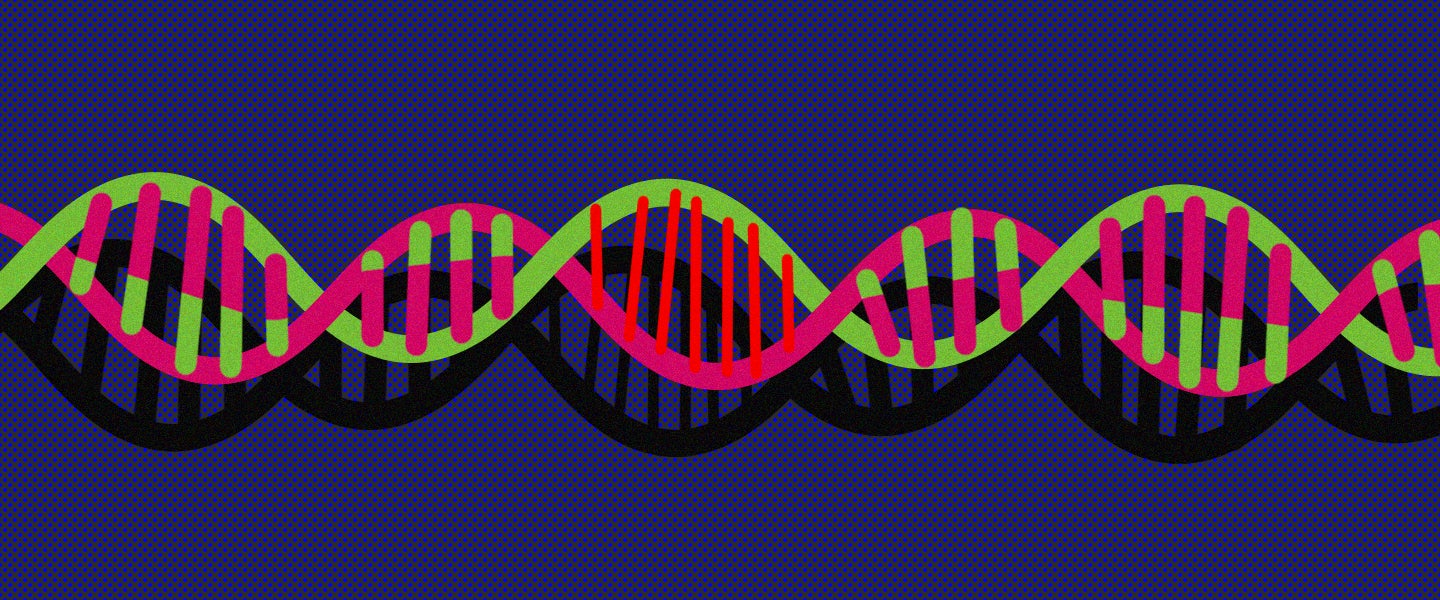Jeanny King, 33, stood in line at her local post office in Surbiton, a small suburb of London, and prepared to send out another plastic vial of spit for inspection — the second costly test (at around $150 per kit) she’d taken in the past six months. King had always confidently identified as British-Caribbean, but was in pursuit of answers. Having been raised by a single mother and her aunts, she had little knowledge of her father’s side of the family, other than a few anecdotes her mom was willing to share. “All I knew was that he was also Caribbean,” she says. “He came from the same background as my mom. They knew each other when they were growing up in London in the 1960s.”
Despite her lack of intimate familial knowledge, though, King believed at least one thing to be true: She was entirely Caribbean, and could trace her family’s migration to Europe back to the “Windrush Generation,” Afro-Caribbean men and women who were brought to the U.K. shortly after World War II to help rebuild it.
For confirmation — but mainly out of curiosity — last year she decided to order an at-home DNA test from 23andMe (“All of my friends were doing it, and it seemed harmless,” she explains). She rigorously followed the kit’s instructions and received the results of her test via email. “I expected to know the broad results,” she says. “I expected that I’d be around 80 to 90 percent Sub-Saharan African.” She was most interested then in the remaining 10 percent.
The test did confirm that the majority of her heritage is from Sub-Saharan Africa — 87 percent, in fact. But she was surprised to find that nearly 8 percent of her DNA traces back to “Broadly Northwestern European” lineage. In the scheme of things, that might seem like an insignificant number, but for King, it turned her life upside-down. “I didn’t know how to make sense of it,” she explains. “I asked my [mom] and other family relatives how this might have happened, and none of them could think of an answer.”
The 23andMe subreddit has countless stories of people who have discovered affairs, secret adoptions and previously unknown siblings with the company’s DNA tests. And in 2018, the results of one at-home DNA test went viral when a family discovered that after decades of believing they were Italian, they were more likely to have originated from either Switzerland or New Jersey.
My uncle on my Italian side got one of the DNA tests done and it turns out they're not Italian and everyone in my family is having a mental breakdown
— ?abortion is a human right? (@queenozymandias) November 23, 2018
People whose families have been destroyed by 23andme and other DNA sequencing services, what went down? from AskReddit
When such revelations arise, some turn to secret Facebook support groups to cope while others, like King, simply refuse to believe the results. And probably not without reason: Last year, a study published in the journal Genetics in Medicine suggested that around 40 percent of at-home DNA testing is likely to contain erroneous results, often by detecting strands of genetic material that isn’t actually there. The study also found that at-home DNA analysis services frequently misinterpret data from the sample, ranging from its structural composition to even its origins.
“Such a high rate of false positives in this study was unexpected,” says Stephany Leigh Tandy-Connor, a geneticist at Ambry Genetics Corp and the author of the study. Though she acknowledges the limitations of the study (it was based on 49 samples), she claims these inaccuracies, even if small, can have a profound impact on people’s lives. “While [at-home DNA tests] results may lead to healthy changes in lifestyle or diet, they could also result in unwarranted emotions, including anxiety when someone obtains unexpected information, inaccurate information or disappointment.”
Though geneticists — and at-home DNA companies themselves — have acknowledged the possibility of erroneous data, there’s little that consumers can do to challenge the assertions made by 23andMe, Ancestry.com, DNAfit, etc. In part, this is because commercial DNA testing services require large numbers of customers to build a database in which DNA can be compared. Basically: The accuracy of these services can only improve by selling more kits.
Furthermore, if you’re a person of color, from a minority ethnic community or from a lineage where little public information is available, your DNA results are going to be even less detailed and carry even more inaccuracies. “Challenges in funding and poor infrastructure make it more difficult to gather genetic data on underrepresented DNA groups like Africans, Asians and indigenous peoples,” Sarah Tishkoff, a geneticist at the University of Pennsylvania, told PC World late last year. And so, she added, “Right now, it’s not possible to infer the exact sources of ancestry of African Americans, and it would be unfortunate if they have the expectation that they will be able to get that information.”
Twenty-four-year-old Alhan Bazît is from North London and currently working on a family tree. “I did an at-home DNA test last year, mainly because I’ve always been curious about my lineage, and there isn’t a lot of information out there other than stories my granddad tells me,” he says. Specifically, he thought it would help him chart his family’s Kurdish heritage and movements across the Mediterranean. His results did trace back to Turkey and Syria, which was somewhat accurate, but contained little insight into the ethnic groups and communities there. “It was pretty useless for me,” Bazît says. “None of my family speak Turkish or Arabic. In fact, some of them would be insulted if you said they were from Turkey. Honestly, I’ve found out more about my family by listening to old stories at family weddings.”
“People should understand not to take the results of these tests completely seriously,” explains Anders Bergstrom, a postdoctoral fellow who researches human evolutionary genomics at the UK based Crick Institute. “They’re interesting and fun things to do, but they only provide a snapshot of the whole picture.” Nonetheless, analysts suggest that by 2026, DNA testing will be worth $18 billion in the U.S. alone. Likewise, 23andMe kits were among Amazon’s highest-selling items on its most recent Prime Day, according to internal records from the company.
But for people of color at least, more kits with more European DNA samples are unlikely to be useful, and will only increase the odds of receiving inaccurate results. Or as King puts it — despite her pursuit of a second test: “I don’t think I’ll ever have a complete picture.”

